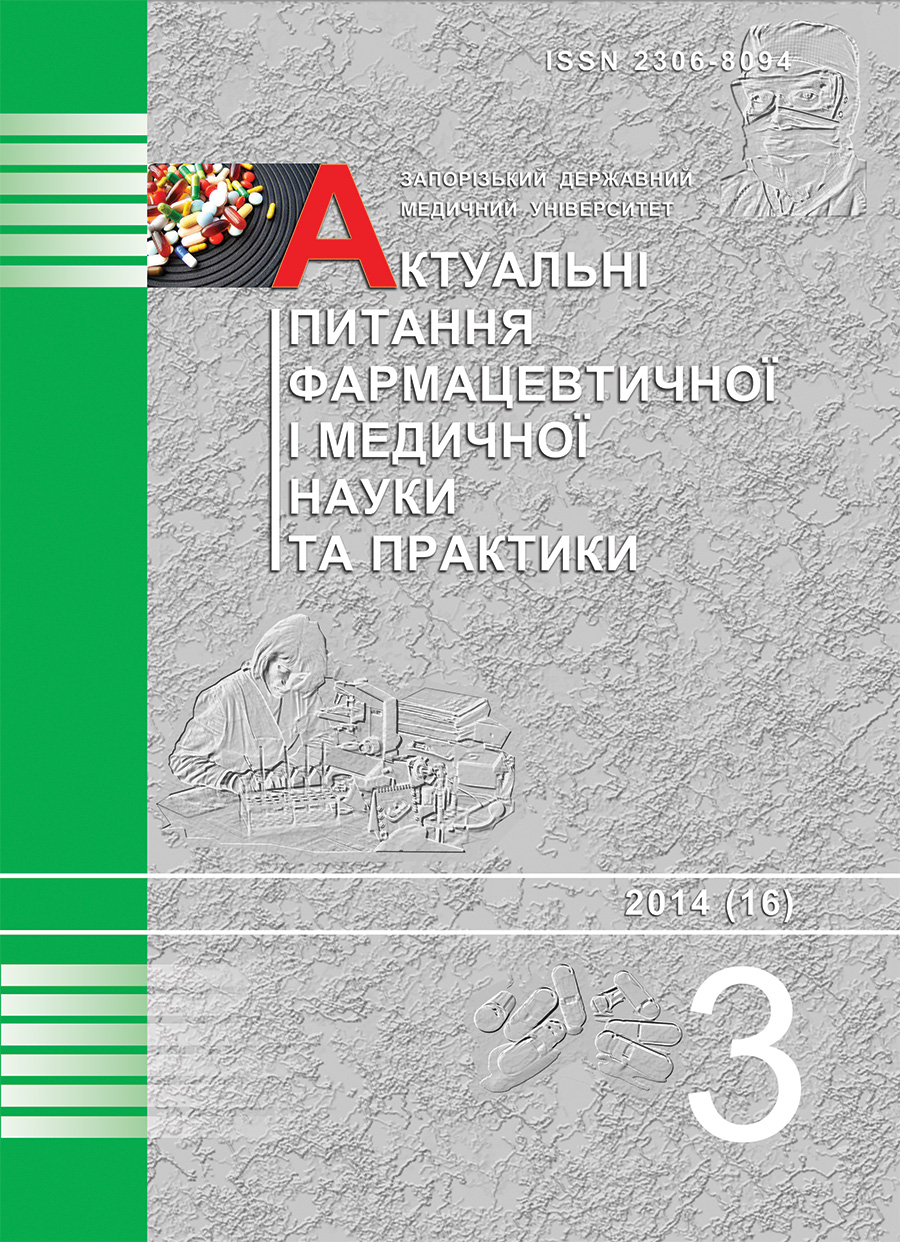Microscopic features of raw materials of Laurus nobilis L.
DOI:
https://doi.org/10.14739/2409-2932.2014.3.33157Keywords:
Laurus, Microscopic Features, Plant Shoots, Plant LeavesAbstract
Aim. The urgent task of contemporary pharmacy is the continuation of studies of popular medicinal plants’ raw materials, for example, laurel, for further adjustment of its application. To establish diagnostic microscopic features the anatomic structure of laurel shoots and leaves has been studied using well-known micro technical techniques.
Methods and results. It has been established that shoots had absently vascular type of xylem with frequent single-row pith rays, and etheric oil receptacles are located in phloem part, the leaf is hypostomatic with dorsoventral type of structure, an epidermis is with frequent stoma of anomocytic type, the main vein and petiole are single fascicular.
Conclusion. This shows that diagnostic features of shoot structure are the type and the localization of the etheric oil receptacles, the type of the xylem, the localization features of the pith rays, leaf – the absence of pubescence, the type of leaf blade, the localization features of stoma.
References
Retrieved from www. Fitoapteka.org/herbs-I/2154-laurus-nobilis.
Cherrat, L., Espina, L., Mohammed Bakkali, M., Garc´ıa-Gonzalo, D., & Rafael Pag´an R.and Amin Laglaoui, A. (2014). Chemical composition and antioxidant properties of Laurus nobilis L. and Myrtus communis L. essential oils from Morocco and evaluation of their antimicrobial activity acting alone or in combined processes for food preservation. J. Sci. Food Agric., 94, 1197–1204. doi: 10.1002/jsfa.6397.
Al-Kalaldeh, J. Z., Abu-Dahab, R., & Afifi, F. U. (2010). Volatile oil composition and antiproliferative activity of Laurus nobilis, Origanum syriacum, Origanum vulgare, and Salvia triloba against human breast adenocarcinoma cells. Nutr. Res., 30, 271–278. doi: 10.1016/j.nutres.2010.04.001.
Cho, E. Y., Lee, S. J., Nam, K. W., Shin, J., Oh, K. B., Kim, K. H., Mar, & W. (2010). Amelioration of oxygen and glucose deprivation-induced neuronal death bychloroform fraction of bay leaves (Laurus nobilis). Biosci. Biotechnol. Biochem., 74, 2029–2035.
De Corato, U., Trupo, M., Leone, G. P., Di Sanzo, G., Zingarelli, G., & Adami, M. (2007).Antifungal activity of the leaf extracts of laurel (Laurus nobilis L.), orange (Citrus sinensis Osbeck) and olive (Olea europaea L.) obtainedby means of supercritical carbon dioxide technique. J Plant Pathol. 89(3), 83–91.
Ben Jemaa, J. M., Tersim, N., Toudert, K. T., & Khouja, M. L., (2012). Insecticidal activities of essential oils from leaves of Laurus nobilis L. from Tunisia, Algeria and Morocco, and comparative chemical composition. J Stored Prod Res, 48, 97–104.
Ozcan, B., Esen, M., Sangun, M. K., Coleri, A., & Caliskan, M., (2010). Effectiveantibacterial and antioxidant properties of methanolic extract of Laurus nobilis seed oil. J Environ Biol, 31, 637–641.
Barykina, R. P., Veselova, T. D., Devyatov, A. G., Dyalilova, Kh. Kh, & Ilina, G. M. (2004) Osnovy microtechnicheskich issledovanij v botanike [Basics micro technical studies in botany: Right full-time students head]. Moscow. [in Russian].
Downloads
How to Cite
Issue
Section
License
Authors who publish with this journal retain copyright and grant the journal right of first publication with the work simultaneously licensed under a Creative Commons Attribution License that allows others to share the work with an acknowledgement of the work's authorship and initial publication in this journal.


